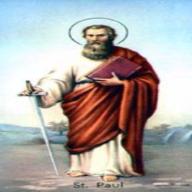簡單來說,你所看到的「六品」相信是指梵蒂岡第二次大公會議前「神職」中的「執事」職務,因為以前神職分為七品,執事乃神品聖事中的第六品,神父是第七品,而主教是完滿的第七品。現時神品(聖秩)聖事只有三個等級:執事(以往稱為六品)、神父和主教,至於一至五品例如看門、驅魔已不是神品,但仍為準備晉昇執事或神父的候選者保留讀經職和輔祭職(三品和四品)。
1) 可否告知每個品位(一至幾多?)的名稱。如第一品、第二品、第三品:讀經職、第四品:輔祭職 etc.
2) 上述說︰「神父是第七品,而主教是完滿的第七品」。
問︰神父的第七品和主教的完滿第七品有什麼分別?。
3) 那第三品的讀經職,是否即現今的讀經員?
4) 至於天使(天神),教會傳統相信有九品: 他們的功能是什麼?有沒有邊個大過邊個?
神品聖事的品位 - 六品, 七品
2007-12-24 6:21 am
回答 (2)
2008-01-02 1:33 am
✔ 最佳答案
以下錄自天主教百科全書:Hierarchy of Order
The Council of Trent has defined the Divine institution of the first three grades of the hierarchy of order, i.e. the episcopate, priesthood, and diaconate (Sess. XXIII, De sacramento ordinis, cap. iv, can. vi). The other orders, i.e. those of subdeacon, acolyte, exorcist, lector, and porter, are of ecclesiastical institution. There is some controversy about the subdiaconate. The Council of Trent did not decide the question, but only declared that Fathers and councils place the subdiaconate among the major orders (loc. cit., cap. ii). It is now pretty generally held that the subdiaconate is of ecclesiastical institution, chiefly because of the lateness of its appearance in ecclesiastical discipline. Its introduction was due to the unwillingness of certain Churches to have more than seven deacons, conformably to Apostolic practice in the Church of Jerusalem (Acts 6:1-6). Furthermore, the ordination rite of subdeacons does not seem sacramental, since it contains neither the imposition of hands nor the words "Receive the Holy Ghost". Finally, in the Eastern Catholic Churches the subdiaconate is reckoned among the minor orders. For this opinion may be quoted Urban II in the Council of Benevento in 1091 (Hardouin "Acta Conc.", VI, ii, 1696, Paris, 1714), the "Decretum" of Gratian (pars I, dist. xxi, init.), Peter Lombard ("Sent.", Lib. IV, dist. xxiv), and others; see Benedict XIV, "De Synodo Di cesanâ.", VIII, ix, n. 10). This hierarchy of ecclesiastical origin arose at the end of the second and the beginning of the third century, and appears definitely fixed at Rome under Pope Cornelius (251-252), who tells us that in his day the Roman Church counted 46 priests, 7 deacons, 7 subdeacons, 42 acolytes, and 52 clerics of lower grades, exorcists, lectors, and porters (Eusebius, "Hist. Eccl.", VI, 43). In the primitive Church there were also deaconesses, widows, and virgins, but these did not belong to the hierarchy properly so called, nor does Pope Cornelius include them in his list of the Roman clergy. Their principal functions were prayer, the practice of works of charity, and of hospitality; while they performed certain liturgical functions, as in the baptism of women and at the agape, they never took any part, except by unauthorized abuse, in the ministry of the altar strictly speaking (Duchesne, "Christian Worship", London, 1904). Finally, although abbots of monasteries may confer the four minor orders, they do not constitute a special order or grade in the hierarchy. It is not by virtue of the blessing they receive from the bishop that they may confer orders, but by virtue of a privilege which canon law grants to abbots who have received such solemn blessing from a bishop (Gasparri, "Tractatus Canonicus de sacrâ ordinatione", I, iv, Paris, 1893). The Latin Church, therefore, counts eight grades in the hierarchy of order, the episcopate being counted a separate order from that of the priesthood, and ecclesiastical tonsure not being an order.
2007-12-31 11:00 pm
Sorry for using English.
1)The church will not 規定this job is what 品.輔祭and讀經are volunteer
2)both神父and主教 shares the same 司祭檯
3) They are the parishioners , not品
4)天使 are messengers of god and helps jesus.
everyone is even in the church
1)The church will not 規定this job is what 品.輔祭and讀經are volunteer
2)both神父and主教 shares the same 司祭檯
3) They are the parishioners , not品
4)天使 are messengers of god and helps jesus.
everyone is even in the church
參考: me
收錄日期: 2021-04-13 14:47:17
原文連結 [永久失效]:
https://hk.answers.yahoo.com/question/index?qid=20071223000051KK04130

